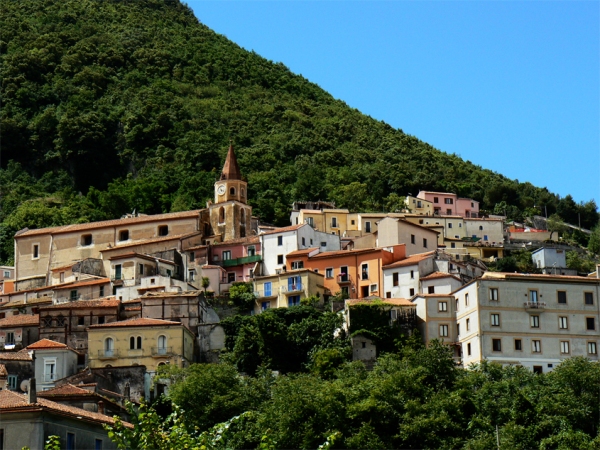Basilicata is the instep of Italy’s boot, and while it doesn’t attract anywhere near the number of visitors of its northern neighbour Campania (home to the Amalfi Coast and Naples), it does offer plenty of attractions to those making the journey to this southern part of the country. One of its main draws is the charming town of Maratea, home to many beaches and one particularly impressive statue.
Maratea is the main town of the Basilicata region and sits close to the southern Tyrrhenian Sea coast; it’s around 3 hours’ drive south of Sorrento and Naples. It’s a higgledy-piggledy hilltown, with attractive old houses squeezed together along winding narrow lanes, and separated from the sea below by a strip of woodland. It’s the type of small Italian town that’s never likely to be over-run with tourists, but it offers those who do come a chance to slow down to the gentle pace of life so typical of rural southern Italy.
Despite a modest population of barely 5,000 inhabitants, Maratea boasts no fewer than 44 churches. Some have been better preserved than others, and some contain historical and cultural treasures whose importance is realised far beyond the local community. The Chiesetta del Calvario chapel is home to a fresco of the Madonna and saints, built into its façade and dating back to 1548. You can take a look at this and other frescoes within the chapel.
And while the pretty squares of Capri quite rightly attract the attention and admiration of thousands of daily visitors, the Piazza Buraglia in Maratea is an equally charming spot and makes a perfect place in which to have a coffee and watch the world go by. Another place to explore, just beyond the town proper, is the delightfully-named baroque-style Convento dei Cappuccini. Here you’ll find an exhibition which displays Maratea’s quite considerable collection of archaeological findings.
Dominating Maratea is the Cristo Redentore (Christ the Redeemer) statue. At 22 metres, it is the world’s 5th-tallest statue of Jesus. With its outstretched arms the statue can be seen from far out at sea, and its construction in the 1960s was no doubt a major boost for what remains one of Italy’s poorer regions. The statue’s lofty position makes for a good, energetic hike from the town to its base, passing the remains of the town’s oldest district along the way. The views of the coast from the hilltop are spectacular.
The coast at the foot of Maratea offers around 20 beaches, mainly of black sand, for those wanting to make the most of the clear waters of the Tyrrhenian Sea. Maratea Porto is a pretty port village which has undergone recent development and has been smartened up, but it’s not difficult to look beyond the luxury yachts in the harbour and find the charm of this traditional harbour village.
Image: by mozzercork. Licensed under CC BY 2.0 via Wikimedia Commons.





